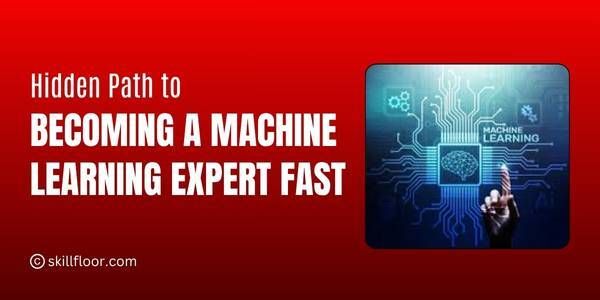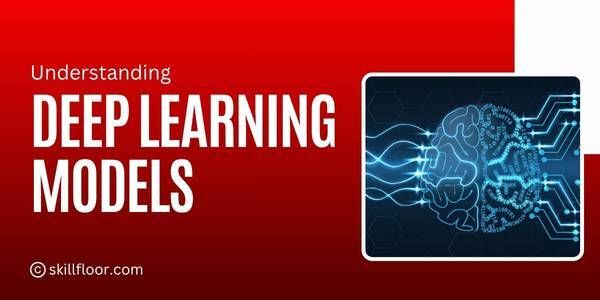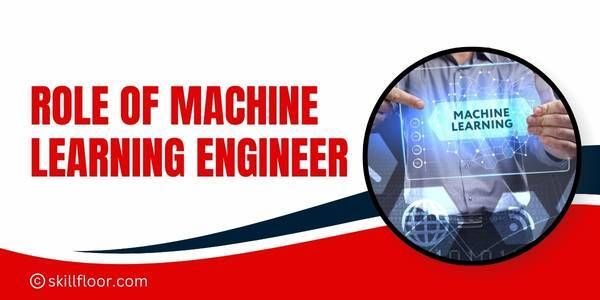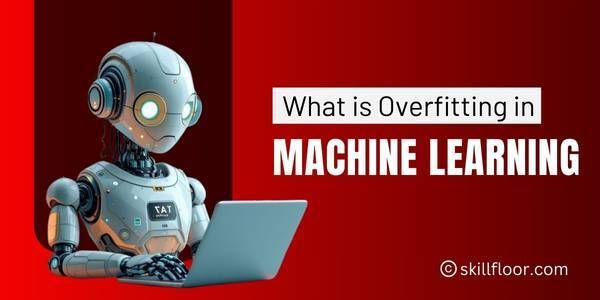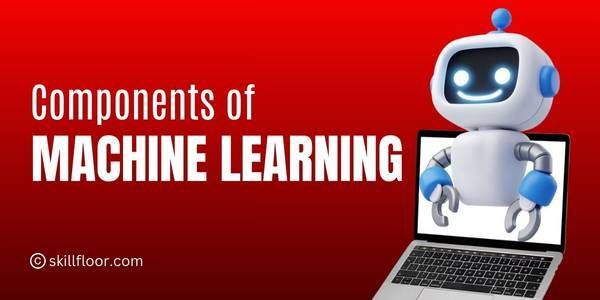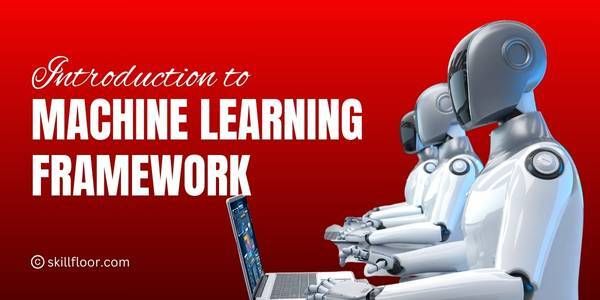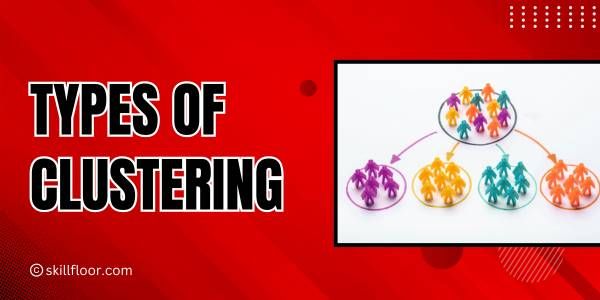Computers can learn from data patterns and make predictions because of a potent technology known as machine learning. This explains why applications can suggest movies, music, and goods specifically for you. By making adjustments depending on what they "see" in data, machine learning makes computers smarter over time.
Machine learning is changing a variety of sectors in today's fast-paced world, including entertainment and healthcare. Netflix and other streaming services use it to recommend shows you might enjoy, and doctors use it to identify illnesses early. Machine learning provides insightful knowledge by analyzing vast volumes of data, which simplifies and improves daily living.
Machine learning is intriguing because it can grow and change as it consumes more data. It constantly learns and improves in accuracy over time rather than being constrained by predetermined restrictions. This flexibility allows for countless opportunities for creativity, generating fresh ideas and facilitating more efficient and productive work for companies, artists, and individuals.
What is Machine Learning?
The technique known as machine learning, or ML for short, enables computers to learn from data and make judgments without explicit programming. Imagine it like teaching a dog to fetch a ball—that is, educating a computer to learn from examples. ML allows computers to gradually get better at what they do by using data and experiences, much like a dog learns by observing and practicing.
Machine learning (ML) enables computers to identify patterns and forecast results, in contrast to traditional programming, where a developer sets comprehensive instructions for each operation. It is widely utilized in a variety of businesses to predict trends, increase productivity, automate processes, and comprehend consumer behavior.
A Brief History of Machine Learning
The field of machine learning has developed throughout the years. Its origins date back to the middle of the 20th century, although major advancements have been made recently.
1950s
Artificial intelligence (AI) as a concept was presented. "Turing Test" by Alan Turing investigated the possibility of human-like machine thought.
1980s
Neural networks, which are essential to the current developments in deep learning, were created as a result of researchers' efforts to create increasingly intricate algorithms.
2000s
Big data and cloud computing have made machine learning (ML) more accessible by enabling ML algorithms to handle bigger datasets.
2010s
An ML boom was spurred by the expansion of internet data, improvements in processing power, and the development of complex algorithms. To customize user experiences, tech behemoths like Google, Amazon, and Facebook started utilizing machine learning.
Today, machine learning (ML) has developed into a crucial field for sectors like healthcare and finance, and it is expanding as new technologies are developed.
The Importance of Machine Learning Today
Machine learning has revolutionized a number of sectors, fostering innovation and corporate expansion. ML's value may be attributed to the following main factors:
-
Enhanced Personalization: Businesses may create more engaging and customized experiences that appeal to individual interests by customizing recommendations for customers, such as Spotify music playlists or Amazon purchase suggestions.
-
Efficiency and Automation: ML frees up human resources to concentrate on more creative and meaningful work by handling monotonous activities like data input, picture labeling, and customer query sorting.
-
Better Decision-Making: Businesses can foresee trends, manage risks, and make well-informed decisions with the use of machine learning and predictive analytics. As a result, businesses are able to remain proactive and adaptable to shifting market conditions.
-
Improved Customer Service: Voice assistants and chatbots are powered by machine learning (ML), which enables businesses to offer prompt customer care. In addition to increasing client happiness, this immediate service facilitates prompt and effective resolution of inquiries.
-
Enhanced Product Development: ML helps businesses learn what customers want by analyzing use trends and customer feedback. Businesses are able to create and improve goods that better satisfy the wants of their customers because of this information.
-
Accurate Demand Forecasting: Machine learning (ML) helps companies forecast future demand by examining historical sales and industry patterns. In addition to cutting expenses and ensuring that items are accessible when customers need them, this also helps optimize inventories.
Differences Between Machine Learning and Artificial Intelligence
Artificial intelligence (AI) and machine learning are not exactly the same, despite their frequent confusion. The idea that robots may do activities in a way that we would deem "smart" is referred to as artificial intelligence (AI). However, ML is a branch of AI that focuses on data-driven learning.
|
Aspect |
Machine Learning |
Artificial Intelligence |
|
Definition |
Training computers to make decisions based on data. |
Enabling machines to perform tasks like human intelligence. |
|
Examples |
Recommendation systems, fraud detection, image recognition. |
Robotics, natural language processing, self-driving cars. |
|
Goal |
Improve model accuracy over time using data. |
Create systems that can think and adapt like humans. |
|
Scope |
Narrower, focused on learning and improvement. |
Broader, covering all aspects of "smart" behavior. |
|
Techniques Used |
Algorithms like regression, clustering, neural networks. |
Combines ML with reasoning, problem-solving, perception, etc. |
|
Data Dependency |
Highly dependent on data to learn and improve over time. |
Can work with or without data, includes symbolic reasoning. |
|
Human Interaction |
Minimal human intervention once the model is trained. |
Often requires complex human inputs, especially in rule-based AI. |
|
Complexity Level |
Focuses on specific tasks, making it generally less complex. |
Encompasses a broader range, including general intelligence tasks. |
Types of Machine Learning
Machine learning encompasses a variety of model-training techniques, each appropriate for a particular purpose. Let's examine a few of the primary models of machine learning:
1. Supervised Learning
Supervised learning is similar to using examples to train a machine. The most popular kind uses labeled data—that is, data with known results—for model learning. By recognizing patterns in the labeled data, a computer may eventually learn to identify each animal when it is shown a sequence of labeled photographs of dogs and cats.
For jobs like identifying spam in emails or forecasting home values, this kind of learning is especially helpful. Supervised learning models may provide informed predictions on fresh, unknown data by being fed examples with the right responses. It is frequently employed in fields with distinct, labeled data sets that improve the model with every instance.
2. Unsupervised Learning
Unsupervised learning lets models find patterns or groups in the data on their own without the need for labels or predetermined results. Giving a computer a lot of data and letting it organize it anyway it sees fit is analogous to that. This kind of learning is frequently applied to uncover correlations that are buried in big datasets.
Customer segmentation is a popular use of unsupervised learning, in which a model segments clients based on shared interests or purchasing patterns. Additionally, it helps companies better target particular audiences by allowing them to find trends in data without the requirement for pre-labeled groups.
3. Reinforcement Learning
Learning through making mistakes is the foundation of reinforcement learning. Consider a computer program that is learning to play a game; with rewards for each successful move, the program is encouraged to keep up the excellent work. Like a human learning from experience, the model gains the ability to make better choices over time in order to maximize rewards.
Self-driving vehicles, which must constantly make safe driving judgments, are an example of a task where this kind of learning works best. Additionally, it is often used in gaming, where models develop winning tactics by experimenting with various movements and getting feedback on their selections.
4. Semi-Supervised Learning
Unsupervised and supervised learning are combined to create semi-supervised learning. It is helpful in situations when labeling data is costly or time-consuming since it employs a small quantity of labeled data in addition to a much larger collection of unlabeled data. This approach provides labeled instances as a starting point, allowing the model to explore and learn from the remaining cases.
This method works well in fields like language translation or medical imaging where it might be difficult to get labeled data. Even with a small amount of labeled data, organizations can still train efficient models and make accurate predictions by using semi-supervised learning.
Understand Core Algorithms and Models of Machine Learning
Machine learning makes use of important algorithms to find trends and draw conclusions from data. In order to provide intelligent, data-driven insights, fundamental algorithms include classification for categorization, clustering for grouping like things, and regression for predictions.
1. Linear Regression
Linear regression uses data points to find the "best fit" line in order to predict continuous outcomes. It is helpful for forecasting, such as making sales predictions based on past performance, and it offers clear insights.
2. Logistic Regression
Data is classified using logistic regression, which divides it into groups such as "spam" and "not spam." Because it calculates probabilities, it is perfect for jobs like risk assessment and predicting consumer behavior.
3. Decision Trees
Decision trees, which resemble flowcharts, branch across possibilities to make decisions. When making decisions based on explicit guidelines and criteria, such as when approving loans, they are useful.

4. K-Nearest Neighbors (KNN)
K-Nearest Neighbors finds "neighbors" in datasets to uncover commonalities between them. It is easy to use and efficient for recommendation systems, classifying individuals or comparable things according to common traits or preferences.
5. Support Vector Machines (SVM)
Encouragement Vector machines are ideal for classification jobs because they draw borders that divide data into distinct groups. They perform effectively in domains where proper identification depends on accuracy, such as picture recognition.
6. Neural Networks
Neural networks process information in layers to manage complicated tasks, simulating the organization of the brain. They power many of today's cutting-edge advances in domains like language translation and facial recognition.
Machine Learning Languages Explained: Python, R, and Beyond
Programming languages that manage data, run algorithms and facilitate effective model creation are essential to machine learning. ML tasks benefit from the distinct characteristics that each language offers, ranging from robust computation to simple scripting and visualization. Let's examine the finest use cases, advantages, and characteristics of the most popular machine-learning languages.
1. Python
Python is widely used in machine learning because of its simple syntax and robust libraries, such as TensorFlow, Keras, and Pandas, which facilitate effective data processing and model creation.
Strengths:
-
Easy to read and write, ideal for rapid prototyping.
-
Extensive support for ML libraries and frameworks.
-
Large community support, offering rich documentation and tutorials.
Best Use Cases: Python is perfect for deep learning applications, data analysis, and general-purpose machine learning activities. It is extensively utilized in predictive analytics, picture identification, and natural language processing (NLP).
2. R
R is an excellent option for data-centric machine learning projects since it is a language that focuses on statistics and data analysis. R is well-liked among statisticians and data scientists due to its extensive ecosystem of packages, including caret, randomForest, and nnet, and its proficiency in data visualization and analysis.
Strengths:
-
Excellent for statistical analysis and data visualization.
-
Offers specialized packages for various machine learning algorithms.
-
Interactive graphics and data exploration capabilities.
Best Use Cases: R is perfect for data-driven analytics, statistical modeling, and machine learning applications with a research focus. It is frequently employed in research and academic settings, as well as in industries that require in-depth statistical understanding, such as healthcare and finance.
3. Java
Java is perfect for large-scale machine learning in business environments because it is stable and scalable. While Python's vast ML libraries are absent, robust model construction is supported by Weka, DL4J, and Apache Spark MLlib.
Strengths:
-
Highly scalable and fast, great for large enterprise applications.
-
Strong support for big data frameworks like Hadoop and Spark.
-
Reliable performance and robust security, ideal for production environments.
Best Use Cases: Java is frequently used in Android development, real-time apps, and large-scale business systems, particularly where scalability and security are top concerns.
4. Julia
Julia is ideal for intricate machine-learning applications involving big datasets since it is a high-performance language built for numerical computing. With a syntax akin to Python and a performance close to low-level languages like C++, it combines computational efficiency with user-friendliness.
Strengths:
-
Extremely fast, suitable for computationally intensive tasks.
-
Great for big data and scientific computing applications.
-
Interactive and easy to write, yet powerful for high-performance tasks.
Best Use Cases: Julia is perfect for scientific computing, big datasets, and scenarios where computational performance is crucial, including complicated neural network training or financial modeling.
5. JavaScript
JavaScript brings machine learning to the front end by allowing models to run directly in web browsers, especially with TensorFlow.js. Because of this, web-based apps that need minimal machine learning capabilities without requiring server-side computation can benefit greatly from JavaScript.
Strengths:
-
Allows ML models to run directly in browsers, enhancing user experience.
-
Simple deployment for web-based applications.
-
Accessible to front-end developers, with growing ML libraries and resources.
Best Use Cases: JavaScript is a great choice for client-side machine-learning jobs, interactive online apps, and projects that need real-time, in-browser machine-learning capabilities like chatbots or image recognition.
6. MATLAB
MATLAB is frequently used for matrix operations and data analysis in academic and technical contexts. It is a good option for specialist industries where matrix-based calculations and visualization are essential since it has built-in capabilities for machine learning and statistical modeling.
Strengths:
-
Excellent support for matrix manipulations and complex calculations.
-
Built-in ML tools and strong visualization capabilities.
-
Popular in academia, especially in engineering and scientific research.
Best Use Cases: MATLAB is perfect for engineering applications, research prototypes, and domains like signal processing and control systems that need matrix-intensive calculations.
7. C++
Game development and embedded devices are two examples of performance-critical machine learning applications that benefit greatly from C++'s speed and performance. Although C++ isn't as user-friendly for beginners as other languages, its speed makes it possible to do real-time machine learning tasks that call for low-latency processing.
Strengths:
-
Fast execution, making it suitable for low-latency applications.
-
Great for system-level programming and applications needing close-to-hardware control.
-
Often used with Python for speed optimization in complex projects.
Best Use Cases: C++ is utilized in embedded systems, game development, and high-frequency trading and robotics—applications where performance is crucial.
Applications of Machine Learning
Many businesses employ machine learning because it is flexible. These are a few of the main areas where machine learning is useful:
1. Healthcare
Based on patient data, machine learning algorithms evaluate medical pictures, assist in illness prediction, and assist in customizing therapy for each patient. Faster diagnosis and more individualized patient treatment are made possible by this.
2. Finance
Financial organizations may better manage risks by using machine learning (ML) to fuel fraud detection, credit scoring, and stock market forecasts. ML improves security and the precision of financial decision-making by examining data patterns.
3. Retail and E-Commerce
ML improves retail experiences through effective inventory management, intelligent pricing schemes, and tailored suggestions. Online retailers are better equipped to predict consumer preferences and maintain product availability.
4. Transportation
ML makes transportation safer and more efficient by enabling self-driving cars, traffic forecasts, and route optimization. Drivers benefit from shorter journey times, increased safety, and optimized fuel efficiency thanks to these apps.
5. Entertainment
To provide a personalized experience, streaming services employ machine learning to suggest films or songs based on customer preferences. In addition to making entertainment more interesting, this guarantees that customers may quickly find new favorites.
6. Education
By evaluating student performance, ML helps teachers modify their teachings and tailor learning in the classroom. Learning may become more dynamic and efficient by highlighting areas that require development or suggesting resources.
Benefits of Machine Learning
Using machine learning offers numerous benefits for businesses:
-
Cost Savings: Because ML automates repeated processes, less manual labor is required, which lowers costs. Companies may now devote resources to higher-value endeavors and strategic expansion thanks to this enhanced efficiency.
-
Real-Time Analysis: ML makes real-time data analysis possible, providing businesses with immediate insights to improve decision-making. Access to data-driven insights quickly enables organizations to remain flexible and react quickly to changes in the market.
-
Enhanced Accuracy: With the collection of additional data, machine learning (ML) enhances accuracy over time, improving forecasts and choices. Businesses may now rely on more accurate data for strategy and planning thanks to this steady progress.
-
Scalability: ML systems are perfect for firms that intend to grow since they are designed to manage massive amounts of data. Businesses may expand thanks to this flexibility without sacrificing effectiveness or performance.
-
Improved Customer Experience: ML provides individualized replies and recommendations to help customize consumer interactions. Businesses may interact with customers more successfully, forging closer bonds and increasing satisfaction, by knowing their preferences.
-
Risk Management: Through pattern recognition, ML helps proactive risk management by seeing possible problems early. Companies are able to identify fraud, predict changes in the market, and adapt, protecting resources and lowering risks.
Key Steps in the Machine Learning Process
There are a few essential stages that are usually taken in order to properly implement machine learning. This is an explanation of the ML procedure:
1. Define the Problem
Set a specific goal first. Determine precisely what you want the model to do, such as classifying photos, increasing interaction, or anticipating client attrition. A clear objective directs each action.
-
Clarify Business Objective: Know exactly what is required, such as increasing sales or decreasing churn, so that every model choice is in line with actual company objectives and addresses significant problems.
-
Identify Stakeholders: Speak with important stakeholders to understand their wants and viewpoints, ensuring that the finished product benefits all pertinent departments and promotes overall success.
-
Specify Model Output: Choose a category, score, or trend that the model should provide so that you know exactly what success looks like right away.
-
Set Success Metrics: Set measurable objectives, such as increasing reaction time or reaching 90% accuracy, to track your progress and encourage further advancements.
2. Collect Data
Good data is everything. Gather relevant, clean data that relates directly to your problem. For customer churn, for example, collect behavior and transaction history to build accurate, valuable insights.
-
Gather Relevant Features: Select the most important information that directly advances your objectives and enhances the conclusions you draw, such as past client behavior or history.
-
Ensure Data Quality: Clean up the data by filling in the blanks, eliminating duplicates, and standardizing formats. Precise, well-organized data produces better outcomes and less trouble.
-
Source Diversity: Integrate information from several sources, such as sales and support, to provide more comprehensive and accurate insights.
-
Balance the Dataset: Make any required adjustments to ensure that every result is fair and accurately represents patterns, especially when working with uncommon events.
3. Choose the Right Model
Choose a model based on your objectives. For classification, use a decision tree; for forecasting, use linear regression. Better outcomes that meet your unique company demands are guaranteed by the appropriate model.
-
Match Model to Task: For the best results, pick a model that fits your objective, such as decision trees for yes/no questions.
-
Consider Interpretability: Simpler models, such as linear regression, are sometimes preferable if you need to provide clear explanations to consumers and stakeholders in order to gain their trust.
-
Factor in Computational Constraints: To ensure that it operates efficiently without slowing down operations, choose a model that integrates seamlessly with the resources that are available, such as processing power.
-
Experiment with Multiple Algorithms: Your chances of success will increase if you test a few model possibilities early on and determine which one works best with your data.
4. Train the Model
Create training and testing sets from your data. Tested on unseen data, the model gains knowledge from the training data. The model becomes more dependable and more accurate with fine-tuning.
-
Split Data Effectively: Carefully separate data into sets for testing, training, and validation so that performance isn't distorted and findings can be evaluated correctly.
-
Apply Cross-Validation: For smaller datasets in particular, use cross-validation to ensure that your model is dependable and works well over a range of data samples.
-
Hyperparameter Tuning: Fine-tune your model by adjusting parameters like depth or learning rate, which can assist to enhance predictions and accuracy.
-
Feature Engineering: Make advantage of your knowledge of the subject to develop practical features that draw attention to trends and provide the model with more reliable indicators of performance.
5. Evaluate and Improve
Examine your model's performance. To identify flaws, use measurements like accuracy or precision. If necessary, make adjustments—try new features or change settings to improve outcomes.
-
Use Performance Metrics: Analyze outcomes using certain metrics, such as recall or accuracy, to see where your model performs well and where it needs work.
-
Identify and Address Bias: Verify your model's predictions for any biases or trends, particularly in delicate areas, to ensure that everyone gets fair results.
-
Monitor Model Stability: Check your model's performance over time or with fresh data to make sure it keeps producing dependable, consistent results.
-
Refine and Retrain: To maintain a high level of accuracy and adapt to changing requirements, revisit and enhance the model over time using new data and improved parameters.
6. Deploy the Model
Use your model in actual systems. Use it for routing in customer service or suggestions in e-commerce. As circumstances change, continue to observe and update to maintain its efficacy.
-
Integrate with Business Systems: Implement your model in actual processes, such as sales or customer service systems, to assist teams in reaching quicker, more informed choices.
-
Automate Monitoring: Configure tools to monitor performance declines so you may be immediately notified if outcomes begin to deviate from your expectations.
-
Establish Feedback Loops: Observe how the model functions in actual situations or get user input to identify areas for improvement.
-
Plan for Updates: Keep the model current and relevant by making it simple to retrain and update it in response to shifting data or business demands.
Ethics and Privacy in Machine Learning
Although machine learning has a lot of promise, it also requires ethical consideration, addressing issues of data security, equity, and transparency to guarantee responsible, privacy-conscious applications that fairly benefit society.
-
Data Privacy: Large volumes of personal data are frequently needed for machine learning, which raises privacy problems. Individual identities are safeguarded and unwanted data usage is avoided by ensuring data anonymization, encryption, and compliance with privacy laws such as GDPR.
-
Bias and Fairness: ML models may provide unfair treatment or discriminating results if they inherit biases from training data. Models may be made fair and equitable for a variety of groups by routinely assessing datasets and applying bias-detection strategies.
-
Transparency and Explainability: Deep learning models in particular behave as "black boxes," making judgments without providing a clear justification. Explainable, transparent models help people understand decision-making processes and expose any biases, which builds confidence.
-
Informed Consent: Getting informed permission is essential when gathering and utilizing personal information for machine learning. Building trust and enabling people to make knowledgeable decisions about their data are two benefits of clearly describing how data will be used.
-
Accountability: Accountability needs to be made explicit when ML models influence important choices, like employment or loan approvals. Establishing responsibility criteria and being ready to assess and modify models as needed are important tasks for organizations.
-
Security of ML Models: Cyberattacks such as adversarial attacks, in which minor modifications to input data change results, can target machine learning algorithms. By putting strong security procedures in place, models are guaranteed to run safely, protecting data and the accuracy of model predictions.
Future of Machine Learning
The future of machine learning promises to transform industries and daily life, making processes smarter, faster, and more accurate. Data may now be handled directly on devices like phones thanks to developments in "edge" computing, which improves speed and privacy. Innovations in domains like environmental science and healthcare are also made possible by collaborative models across businesses, paving the way for a future in which machine learning facilitates a more interconnected and effective society.
Our world is changing due to machine learning's ability to make judgments more intelligently, simplify difficult activities, and foster innovation in a variety of sectors. These technologies provide new opportunities for everyday life, healthcare, education, and business as we continue to develop and improve them. Machine learning can improve the efficiency, personalization, and smoothness of our interactions if acceptable practices are implemented. By accepting this potent instrument and taking ethical considerations into account, we pave the way for a day when technology advances our objectives, enhances people's lives, and promotes constructive change in all spheres of society.
Related Posts
What Are Artificial Neural Networks? A Complete Guide
Learn what Artificial Neural Networks are, how they work in Machine learning, th...
Skills You Need for a Successful Machine Learning Career
Unlock essential skills for a successful Machine Learning Career. Learn technica...
Hyperparameter Tuning in Machine Learning
Unlock your model’s full potential with Hyperparameter Tuning in Machine Learnin...
AutoML: Automating Machine Learning for Beginners
A beginner-friendly, engaging guide to AutoML—learn how automated machine learni...
Are Machine Learning Careers Rising Faster in Bangalore?
Discover why Machine Learning careers in Bangalore are booming, what’s driving t...
What is Gradient Descent in Machine Learning?
Friendly, human-focused guide to Gradient Descent in Machine Learning—see how mo...
How to Become a Machine Learning Expert
Explore the hidden path to becoming a machine learning expert. Learn practical s...
Essential Predictive Analytics Techniques for Modern Bu...
Explore top predictive analytics techniques, from regression to neural networks,...
Understanding Deep Learning Models
Learn how deep learning models help computers understand data, spot patterns, ma...
Introduction to Quantum Machine Learning
Learn how quantum machine learning helps computers process big data, find hidden...
Role of ML Engineer: Beginner’s Guide
Learn the role of ml engineer in a simple guide for beginners, covering their ke...
What is Overfitting in Machine Learning
Understand overfitting in machine learning, why models struggle with new data, a...
Natural Language Processing Interview Questions
Prepare for your next NLP interview with this 2025 guide. Discover 40 detailed N...
Understanding the Core Components of Machine Learning
Discover the core components of Machine Learning—data, algorithms, models, train...
An Introduction to Machine Learning Framework
Explore machine learning frameworks like TensorFlow, PyTorch, and Scikit-Learn. ...
What Is Cross-Validation in Machine Learning
Learn what cross-validation in machine learning is, why it matters, and how it i...
Let’s Explore the Different Types of Clustering
Learn how clustering groups similar data, finds patterns, and turns unorganized ...
Step-by-Step Guide to Data Manipulation in Python
Master the essentials of data manipulation in Python with this step-by-step guid...
Top Machine Learning Engineer Interview Questions and A...
Prepare for your 2025 machine learning engineer interview with this comprehensiv...
A Guide to a Complete Machine Learning Syllabus
Explore a comprehensive machine learning syllabus for 2025 covering fundamentals...

















































